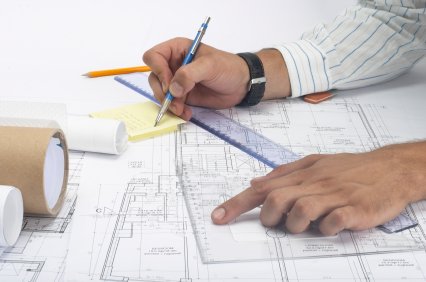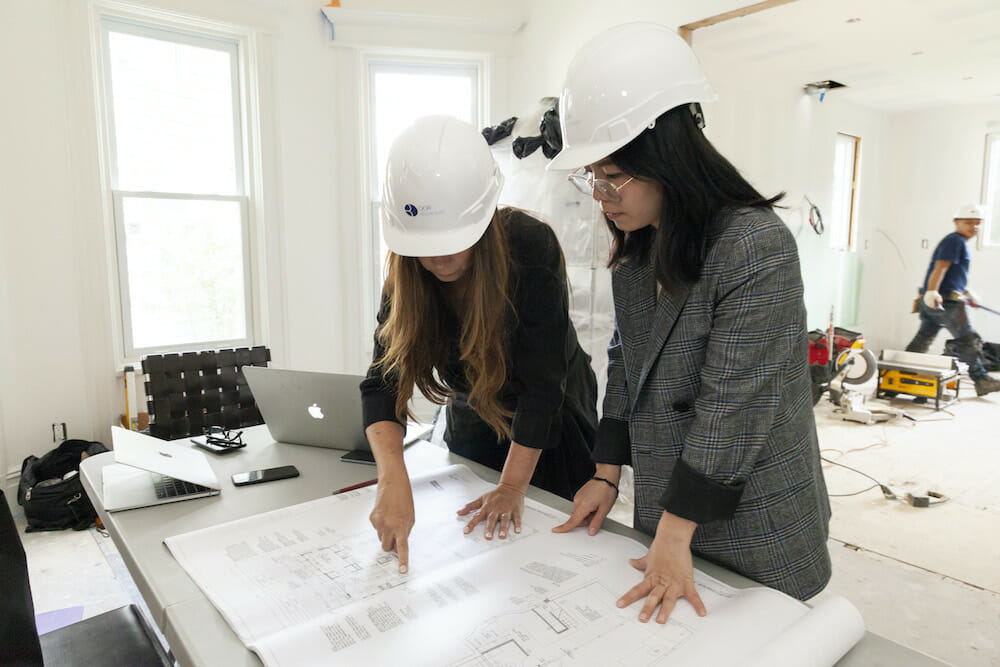Architect Workflow Enhancement for Quicker Project Delivery
Understanding the Diverse Job Paths Available for Aspiring Architect
As an ambitious Architect, you have a globe of career courses waiting for you. Each path offers one-of-a-kind obstacles and chances to use your creative thinking and technical expertise. Whether you're drawn to conventional architecture or the subtleties of sustainable style, there's a niche that lines up with your passions. Comprehending these varied options can shape your expert trip, yet which direction will you select to discover first?
Conventional Style: Designing Buildings and Structures
Standard design concentrates on developing buildings and structures that mix functionality with visual appeal. As you explore this area, you'll appreciate the detailed balance between type and purpose. You'll discover to draw motivation from historical styles, including aspects like symmetry, materials, and craftsmanship. Your designs can show cultural heritage, showcasing neighborhood traditions while fulfilling modern-day requirements.
You'll develop skills in preparing, model-making, and site analysis, allowing you to envision and connect your ideas effectively. Engaging with customers, you'll need to recognize their vision and convert it right into possible designs.
Furthermore, developing codes and sustainability methods are vital in your work, guaranteeing your structures are ecologically friendly and secure. As you expand in your occupation, you'll find possibilities in household, commercial, or perhaps remediation projects, each offering special challenges. Welcoming typical design leads the way for a meeting career that pays homage to the past while forming the future.
Urban Planning: Shaping Areas and Public Spaces
As an ambitious Architect, you can play an important function as a metropolitan organizer, transforming just how areas communicate and operate. By using area interaction techniques, you'll guarantee that locals have a voice in forming their atmosphere. Plus, incorporating lasting layout principles will assist develop rooms that not just meet today's needs however likewise secure the future.
Role of Urban Planners
While lots of may think of architects as the sole enthusiasts behind structures, urban planners play an essential duty in shaping the broader landscape of areas and public spaces. By working together with various stakeholders, you'll aid create parks, transport systems, and property locations that promote social interaction and accessibility. Your expertise in spatial layout and neighborhood dynamics allows you to picture future development while preserving social heritage.
Community Engagement Approaches
Reliable community involvement techniques are important for urban planners to ensure that the voices of homeowners are heard and valued in the planning procedure. To promote significant discussion, you ought to prioritize open online forums and workshops where area participants can express their concepts and concerns. Use surveys and social media to reach a more comprehensive audience, guaranteeing diverse viewpoints are included. Collaborating with local companies can enhance depend on and promote deeper connections. It is necessary to offer clear details about proposed jobs and decision-making processes, allowing homeowners to feel informed and equipped. By actively paying attention and integrating feedback, you'll produce areas that show the area's requirements, ultimately bring about even more successful and lasting metropolitan atmospheres. Welcome transparency and constant dialogue for long-term effect.
Sustainable Layout Principles
When creating metropolitan rooms, integrating sustainable layout concepts is important for developing atmospheres that grow both ecologically and socially. Consider integrating green rooms, like parks and gardens, to enhance biodiversity and improve air top quality.
Designing with water conservation in mind is likewise key-- think concerning rain gardens and permeable surface areas to take care of stormwater. Involving neighborhood members throughout the planning process assurances that the rooms you develop fulfill their needs and motivate social communication. By embracing these concepts, you'll add to dynamic, sustainable city landscapes that benefit everybody.

Landscape Style: Creating Lasting Outside Settings
As you check out landscape style, you'll discover crucial design principles that produce useful and stunning exterior rooms. Lasting practices play a vital function in making certain these atmospheres grow while decreasing environmental impact. Plus, you'll locate a variety of occupation opportunities that allow you to make a real distinction in how individuals connect with nature.
Layout Principles in Landscape
Understanding design concepts in landscape design is crucial for developing lasting outside environments that integrate with nature. You'll need to consider aspects like equilibrium, percentage, and scale to ensure your designs really feel cohesive and welcoming. Furthermore, pay interest to seasonal adjustments, making with products that match the environments year-round.
Sustainable Practices Summary
Lasting techniques in landscape architecture not just focus on appearances however also prioritize ecological health and wellness and source conservation. You can make rooms that promote dirt health, such as exercising and making use of natural products permaculture concepts. Eventually, these methods ensure your layouts benefit both people and the setting for years to come.
Occupation Opportunities Exploration
With a strong foundation in sustainable practices, landscape design provides a range of occupation paths that permit you to make a meaningful impact on the environment. Urban planners typically work together with landscape designers to produce green spaces in metropolitan setups, improving city livability. If you're passionate about education, take into consideration becoming a landscape architecture educator, motivating future generations.
Lasting Design: Concentrating on Eco-Friendly Practices
As you explore your career in style, welcoming environmentally friendly techniques can establish you apart in a competitive look at here now area. Sustainable layout concentrates on producing buildings that reduce environmental influence while improving resident health. By incorporating renewable materials, energy-efficient systems, and lasting building strategies, you'll add to a greener future.
Start by getting expertise of environment-friendly certifications like LEED or BREEAM, which can strengthen your qualifications. Think about exactly how all-natural light, ventilation, and thermal efficiency can optimize style. Team up with designers and ecological experts to innovate options that reduce waste and preserve resources.
Do not forget the relevance of community involvement-- engaging local stakeholders can influence layouts that harmonize with the environment. As customers increasingly prioritize sustainability, your expertise in environment-friendly methods will certainly not only draw in tasks yet additionally satisfy your enthusiasm for liable style. Embrace this crucial element of the occupation, and see your job flourish.
Historical Conservation: Safeguarding and Restoring Cultural Heritage
While you begin on your building trip, take into consideration the essential role of historic preservation in maintaining our cultural heritage. This field concentrates on the defense and restoration of significant buildings, sites, and frameworks that inform the stories of our past. By engaging in historic preservation, you'll help safeguard the building tradition that forms area identity.
As a historical conservation Architect, you'll examine historical importance and analyze the condition of structures. You'll work very closely with preservationists and chroniclers to assure authentic repair techniques are used. This profession course permits you to mix imagination with research study, enabling you to create solutions that appreciate initial products and workmanship.
Your work here not only adds to sustainability by reusing existing structures yet additionally cultivates a feeling of pride within neighborhoods. Embracing this path will certainly help you end up being a guardian of history, protecting the tales and appearances that enhance our lives.
Inside Style: Enhancing Indoor Spaces
Historic preservation and indoor architecture both share a dedication to improving the developed atmosphere, yet they concentrate on different aspects. While historic preservation highlights preserving a structure's historical and cultural value, indoor architecture absolutely nos in on optimizing indoor rooms for performance and aesthetic appeals.
As an aspiring Architect, you'll discover that indoor design enables you Your Domain Name to mix imagination with technological skills. You'll make areas that not just look excellent however additionally promote convenience and efficiency. This area entails understanding just how light, shade, and products connect within a room, influencing state of mind and functionality.
You'll service various projects, from residential homes to commercial workplaces, ensuring that each atmosphere satisfies the needs of its passengers. By focusing on individual experience, you can change insides into practical and motivating spaces, making a substantial impact on how people communicate with their surroundings. Welcome the opportunity to boost interior environments and shape the way individuals live and work.
Industrial Design: Combining Capability With Visual Appeals
Industrial layout plays a necessary function in creating items that effortlessly blend visual appeals with capability, making sure that what you use day-to-day is not just visually enticing but likewise useful. As an aspiring Architect, you could engage on your own in this field, focusing on creating everything from furnishings to customer electronics. Your job entails comprehending customer needs, materials, and manufacturing procedures, permitting you to develop ingenious services that enhance day-to-day experiences.
In commercial design, you'll frequently collaborate with producers, marketing experts, and designers, making sure that your styles are not only stunning yet also viable. This occupation course offers a vibrant environment where creative thinking satisfies practicality, making it a satisfying choice for designers interested in forming the products of tomorrow.
Often Asked Questions
What Educational Accreditations Do I Need to End Up Being an Engineer?
To become an architect, you'll require a professional degree in style, generally a Bachelor's or Master's. Furthermore, you'll have to complete a teaching fellowship and pass the Architect Registration Assessment to practice legitimately.
Are There Accreditation Demands for Various Building Career Paths?
Yes, there're accreditation demands for numerous building paths. Architect. You'll require to pass exams, complete internships, and often seek specialized training, relying on your picked focus, like landscape architecture, urban style, or historic preservation
What Software Skills Are Necessary for Engineers Today?

Exactly How Can I Gain Practical Experience While Studying Style?
You can obtain functional experience by interning at architectural companies, joining layout competitors, offering for community projects, or working together with classmates on real-world projects. These opportunities boost your skills and construct valuable connections in the market.
What Job Opportunities Exist Outdoors Typical Design Firms?
You can explore numerous job opportunities outside traditional design firms, like metropolitan planning, interior decoration, landscape architecture, building management, realty development, or also functions in sustainability consulting. Each deals unique obstacles and rewards.
Whether you're attracted to traditional style or the nuances of lasting design, there's a particular niche that straightens with your rate of interests.When designing metropolitan rooms, integrating lasting layout principles is critical for producing atmospheres that grow both environmentally and socially.As you discover landscape architecture, you'll find important style concepts that develop functional and lovely exterior spaces.Understanding style concepts in landscape style is important for producing lasting outside settings that integrate with nature.In commercial design, you'll typically work together with engineers, manufacturers, and marketing experts, making certain that your styles are not only attractive yet also viable.